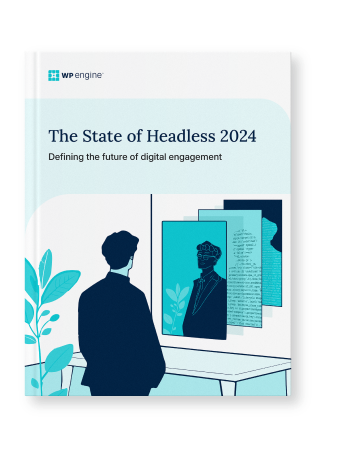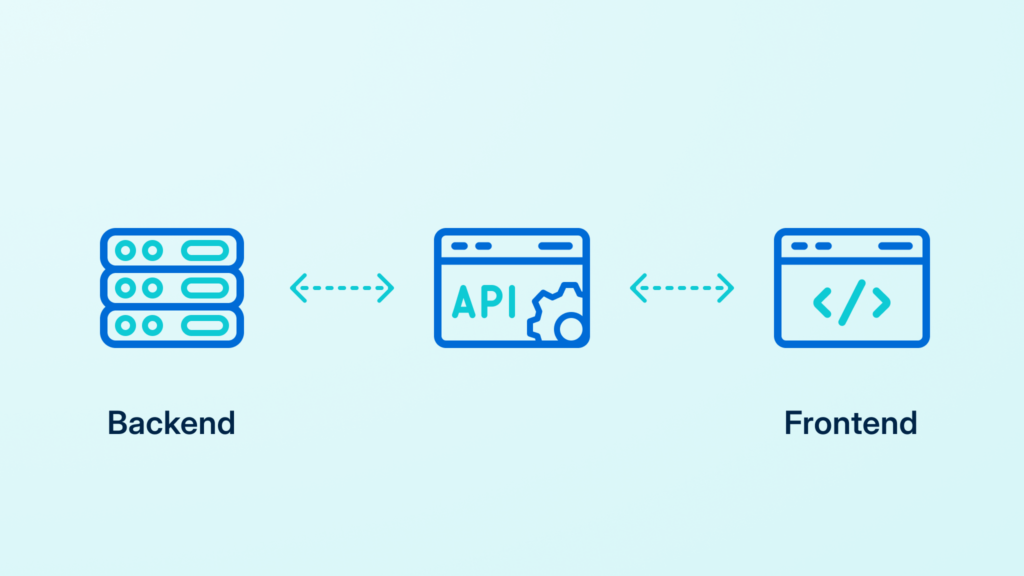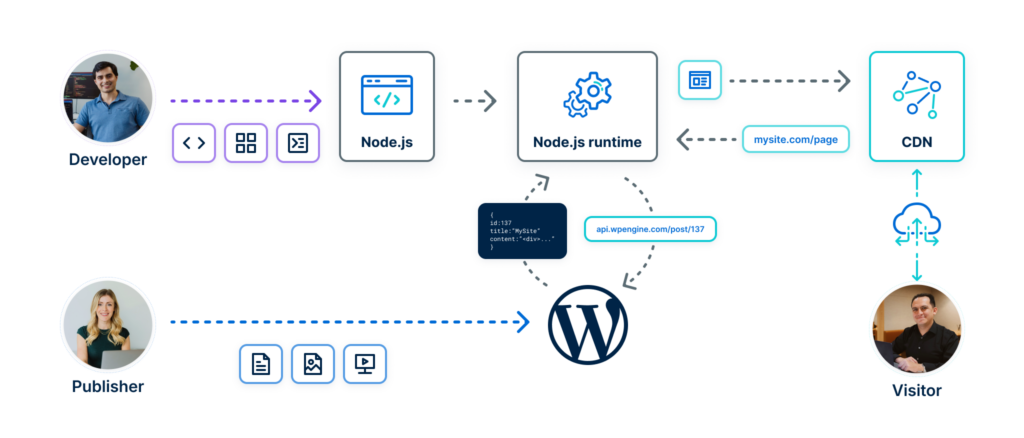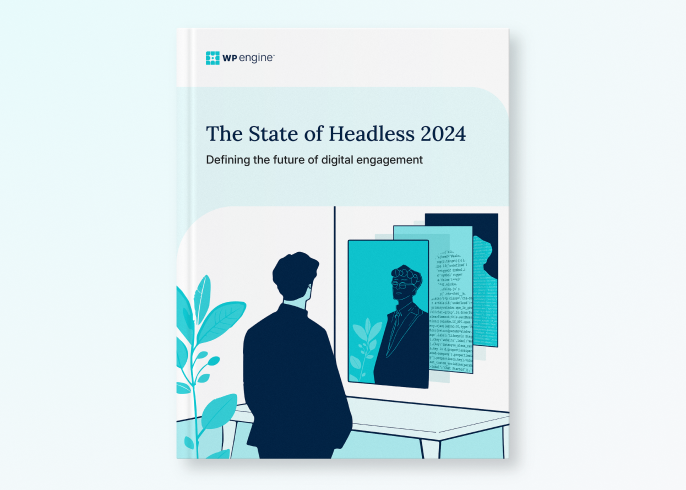

The State of Headless 2024: Defining the Future of Digital Engagement
New international research highlights the expanding role and strategic benefits of headless architecture in delivering modern digital experiences
In today’s multi-device, omnichannel world, businesses need adaptable solutions to keep up with rapidly growing digital demands.
In pursuit of this agility and flexibility, headless web architecture has become a leading choice, enabling businesses to stay competitive by delivering exceptional digital experiences across a wide range of customer touchpoints, including web, mobile, and emerging platforms.
This study offers a comprehensive examination of headless adoption and use, highlighting its growing role in digital strategies. Drawing from extensive research across multiple industries and regions, it explores the rapid rise of headless architecture, its strategic benefits, and the challenges organizations face in its implementation.
Through an analysis of these trends, the various chapters deliver valuable insights into how headless architecture is redefining the future of web development and digital engagement.
Download the full report now for a closer look at the findings or keep reading for a preview of what’s inside. You can find information on WP Engine’s 2021 headless study here.
Redefining digital success
The current tech landscape is marked by shifting complexities, from the rise of artificial intelligence (AI) and evolving security challenges to data privacy concerns and ever-growing customer expectations.
As these dynamics reshape core business operations and drive significant transformation across industries, businesses increasingly need modern web architectures that offer the agility, scalability, and security essential for success.
This is where headless architecture, which decouples a website’s backend (data layer) from the frontend (user interface), stands out—not only as a powerful solution but now as a leading choice for seamlessly integrating emerging technologies, ensuring robust security and data privacy across platforms, and delivering consistent, high-quality content through multiple customer touchpoints.
As this report reveals, agile, scalable web architecture has become more than a competitive advantage—it’s a survival strategy. Once considered an outlier, headless has risen to meet this need, evolving into a critical component of modern digital frameworks and empowering businesses to break free from the constraints of legacy systems.
By embracing headless architecture, these organizations aren’t just responding to the current moment—they’re defining it.
“Headless is about leading the way; it’s about making your own path in a digital landscape that is primed for innovation,” says Tayo Onabule, co-founder and managing director at digital agency Drewl. “Our use of headless has put us in a position to not only meet but exceed the expectations of our clients and the demands of the market.”
Headless 101: The evolution of content management
Businesses are constantly under pressure to meet the growing demands of online users, who expect seamless, relevant, and engaging digital experiences delivered instantly.
Traditionally, a content management system (CMS) served as the backbone of web development, offering robust functionality and a user-friendly interface that could meet these demands. However, as technology advances and user expectations evolve, some of these conventional systems have begun to fall short of delivering the agility and flexibility required for modern digital experiences.
Headless architecture represents a significant evolution in the way content is managed and delivered. Unlike traditional CMS platforms, which tightly couple the frontend with the backend, headless architecture decouples these components, allowing them to function independently.
This separation is achieved through application programming interfaces (APIs) that deliver content to any platform—mobile apps, smartwatches, voice assistants, or IoT devices. The decoupled nature of headless enables developers to create highly customized end-user interfaces tailored to each specific platform and user without being constrained by the backend system.

This approach comes with myriad benefits, among them an often dramatic increase in site performance. Pages load faster when the backend and frontend are decoupled, reducing unnecessary server requests and streamlining content delivery.
The omnichannel benefits of headless are also highly regarded. Headless configurations allow content to be seamlessly distributed across various platforms, ensuring a consistent user experience regardless of the channel. They also make omnichannel delivery more efficient and scalable, enabling businesses to reach their audiences wherever they are.
Last but not least, the separation of layers and systems makes security another one of headless’ top benefits. By isolating the CMS from the presentation layer, a headless site reduces its attack surface, making it harder for malicious actors to exploit system vulnerabilities. This also allows for more granular security controls, ensuring sensitive data is protected across all platforms.
WordPress’ rise as a headless CMS
WordPress, the world’s most widely used CMS, has seen a sharp increase in popularity as a powerful headless CMS. In headless configurations, WordPress retains its familiar and user-friendly interface while offering the flexibility to deliver content across a wide range of platforms through APIs.

This not only makes it an attractive choice for companies seeking to innovate rapidly without being tied down by the limitations of a traditional, monolithic CMS, but it also offers a way out for users constrained by other CMS platforms—often locked into rigid systems that aren’t innovating fast enough.
Perhaps most importantly, headless WordPress enables a well-balanced union between developers and marketers, preserving the editing experience content creators are comfortable with while providing developers the freedom to use the modern frameworks they prefer.
This is a benefit not always apparent in other headless configurations, and for both sets of users, WordPress’ vast library of plugins and themes, its open-source codebase, and its thriving developer community all provide a rich ecosystem of tools, integrations, and support that can enhance the headless experience.
WordPress’ rise as a headless CMS exemplifies a broader need for decoupled systems that offer greater flexibility, scalability, and multi-platform content delivery while maintaining a rich editor experience. As we explore the expanding benefits and use cases of headless in the following sections, these trends illustrate how modern CMS solutions can drive innovation and meet the dynamic demands of today’s digital landscape.

The state of headless 2024
This report explores the state of headless web architecture in 2024, offering an in-depth analysis of how this development approach is reshaping the digital landscape.
As headless adoption continues to rise, so too do the numerous choices available for those considering its use. This report provides insight into the most common adoption drivers, use cases, and implementation practices for success with headless architecture in today’s fast-paced digital environment.
Based on global research conducted by Censuswide in July 2024, this report examines the current state of headless adoption across different businesses and industries, with a particular focus on its growing role in business-critical integrations and innovation. The findings, distilled from survey results of 1,015 IT and marketing professionals across the UK, U.S., and Australia, offer valuable details that businesses and agencies can use in their decision-making and planning processes.

In many ways, headless is already enjoying widespread and even mainstream use, though significant opportunities remain for further adoption and deeper integration. Nevertheless, as the gap widens between organizations that have embraced modern web architectures and those that have not, the following insights offer a detailed view of how headless is shaping the future, highlighting both its growing importance and the challenges that lie ahead.
Key findings
The use of headless architecture has reached critical mass across different industries and company sizes
- Seventy-three percent of all businesses surveyed are currently using headless website architecture, representing a 14% increase from 2021 and a nearly 40% increase from 2019.
- Among those not currently using headless, 98% are evaluating or plan to evaluate headless solutions over the next 12 months—up more than 10% from 2021 and nearly 25% from 2019.
- Respondents in the UK (85%) are significantly more likely to use headless architecture compared to those in Australia (72%) and the U.S. (68%).
The vast majority of businesses using headless now view it as integral to their success
- Eighty-two percent of respondents¹ say headless architecture makes it easier to deliver a consistent content experience, while another 80% believe headless enables efficient content reuse across channels.
- Eighty percent of respondents feel their organization is ahead of competitors when delivering new digital experiences, while nearly 70% point to competitiveness² as the top benefit of using headless.
- Seventy-nine percent of organizations already using headless rate their ability to scale as good³, compared to 62% of organizations that have yet to adopt headless.
While headless is increasingly relied on for strategic integrations and innovation, barriers remain
- More than 70% view enhanced technology and innovation as the top benefits of using headless, with 26% of these respondents citing omnichannel enablement as a key advantage.
- Forty-three percent of respondents integrate analytics software with headless architecture, 42% integrate security software, and 41% integrate CRM tools.
- Nearly 70% of respondents cite organizational hurdles, 65% cite budget constraints, and 47% point to technological challenges as barriers to adopting headless technology⁴.
- Respondents in Australia report the highest percentages of organizational (74%) and budget (73%) barriers to headless adoption, while in the UK, tech barriers (50%) are the most prevalent among all three countries surveyed. In the U.S., organizational barriers are the biggest challenge (66%), but budget constraints are the least common among all three (60.5%).
Despite hurdles, growing budgets and agency support signal continued investment in headless solutions
- Eighty percent of respondents are currently working with or have previously engaged an external agency to implement headless web architecture.
- Sixty percent of respondents believe their organization’s website infrastructure budget will increase in the next 12 months, with 32% expecting a 1%–9% increase and 24% expecting a 10%–19% increase⁵.
- Respondents in the U.S. are the most optimistic, with 63% expecting a budget increase, followed by the UK (59%) and Australia (55%).
- Sixteen percent of respondents expect a 26%–35% impact on bottom-line financials following headless implementation.
Marketing leaders are driving headless integration
- Seventy-five percent of CMOs report using a headless technology approach for their websites, versus 65% of CTOs.
- Eighty-one percent of CMOs agree that headless technologies make it easier to deliver a consistent content experience, compared to 72% of CTOs.
- CMOs are more likely than CTOs to integrate different tools with headless technology. However, CMOs find it more challenging to manage these tools and report results.
Building on past research: Headless adoption continues to surge
As we track the evolution of headless architecture, our ongoing research builds on findings from 2021, demonstrating how headless technology has become even more critical for modern digital strategies. The data from that earlier report underscored the rapid adoption of headless, with businesses increasingly turning to this architecture for its scalability, flexibility, and ability to deliver superior digital experiences.
Key insights from our 2021 study include:
- 64% of businesses were using headless architecture by 2021, a nearly 25% increase from 2019.
- Among those not using headless, more than 90% planned to evaluate it within 12 months—up 15% from 2019.
- 85% of organizations cited increased agility and performance as a primary reason for adopting headless.
- 78% of businesses said headless helped them future-proof their digital strategy by enabling faster adoption of new technologies.
- WordPress was identified as the leading CMS for headless configurations, powering more than half of all enterprise headless systems.
These findings, which you can view in their entirety here, laid the foundation for the trends explored in this report, illustrating how businesses worldwide have continued to embrace headless solutions to stay competitive in a fast-changing landscape.
As we keep our finger on the pulse of headless adoption, we also remain committed to helping organizations navigate the challenges and opportunities this technology presents.
The future of digital is headless
The findings included in this report underscore the critical role headless architecture plays in modern digital strategies. Its now widespread adoption is a testament to the undeniable advantages in scalability, flexibility, and content delivery headless provides, making it an indispensable tool for businesses looking to stay competitive in an increasingly digital-first world.
While the journey toward fully harnessing headless’ potential is still unfolding, significant opportunities remain. Agencies and marketing leaders, in particular, have a unique role to play in expanding its application across more projects while overcoming existing barriers.
Want to learn more? Download the full report now to explore the key findings above in more detail and gain valuable insights into how businesses are leveraging headless to gain a competitive edge.
